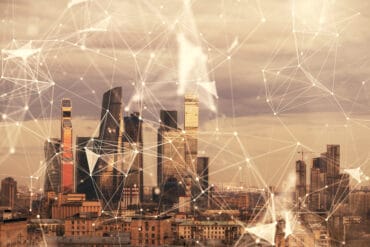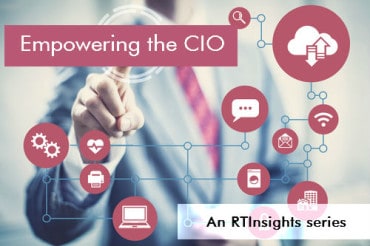
What will 2018 bring in the world of edge technologies? Will we finally get that blockchain isn’t (just) Bitcoin? Will self-driving cars get a conscience? Teradata’s team weighs in.
From blockchain to natural language programming, as a new year dawns, the smartest people across the enterprise world are dusting off the crystal ball and looking into next year. We spoke with the team from Teradata to get their insights into what we can expect in the next year, from self-driving car ethics, to bitcoin vs. blockhain confusion, to telecoms’ IoT efforts.
Blockchain will be the most overused and misunderstood term in 2018: As much as the term Bitcoin is bantered about, most people don’t have a clue what it really is, or understand the role of a blockchain in the secure tracking/ledgering of bitcoin transactions. But, a blockchain can be used for so much more than this. This conversation will continue and there will be a lot of hype about blockchains in 2018. Unfortunately, many people will only associate blockchain with bitcoin and will continue to be generally confused. (From Atif Kureishy, Global VP, Emerging Practices, Artificial Intelligence & Deep Learning, Teradata)
See also: Blockchain can solve disputes using the ultimate jury pool
Self-driving cars will kill people, but the trolley problem is a dangerous distraction: Surveys that ask people how a self-driving car should behave in no-win situations ignore what people would actually do in those cases. The only real test is to put people in simulations and see what they actually do when there is no time to think about it – most people will panic and fail to make any logical decision. Self-driving cars will be drastically safer than human-driven ones. In 2018, we will be focusing on the relative safety of self-driven vehicles over human-driven ones – and on the ability to avoid the no-win situations. (From Todd Walter, Chief Technologist — Americas, Teradata)
GDPR will trip up businesses: Despite all the talk, most organizations will not be ready when GDPR goes into effect at the end of May in 2018. EU authorities will face the dilemma of how hard to enforce the regulations with very few organizations in compliance. (From Stephen Brobst, CTO, Teradata)
Organizations move to justify machine learning findings: Organizations will turn more and more to visualization tools to not only generate insights from analytics but also to demonstrate that the machine learning algorithms are actually doing what they are expected to do and are not producing discriminatory or unjustified results. Such tools and techniques will become handy in case of objections by the data subjects or investigations by regulators. (From Sundara Raman, Senior Telecom Industry Consultant, Teradata)
2018 is the year of multi-cloud portability: In 2018, most companies will use two or more IaaS cloud suppliers for myriad reasons – costs, risk, features, and impulsive departmental buyers. By year-end, new programming tools and disciplines will emerge to minimize cloud lock-in and maximize application portability. (From Dan Graham, Director of Marketing – IoT, Teradata)
Graphical interfaces yield to Natural Language Processing: NLP open source, Siri, Alexa, Google, and Cortana will drive new web and mobile phone application interfaces. By late 2018, 20% of large corporations will have NLP projects to replace aging customer facing web pages. (From Dan Graham, Director of Marketing – IoT, Teradata)
Telecom providers will offer end-to-end service through IoT: Due to the nature of the business, telecom providers have greater flexibility and agility in creating service products at different price points that will appeal to the target market segment. For this reason, telecom service providers are best placed to take advantage of IoT starting in 2018 by offering end to end service (i.e. communication, sensor data collection/management in the cloud, Big Data analytics) to vertical industries such as health, mining, automotive and electricity distribution. (From Sundara Raman, Senior Telecom Industry Consultant, Teradata)
While the hype dies down, AI infrastructure improves dramatically: There will be a “backlash” on “AI Hype” in 2018, and a more balanced approach of deep learning and shallow learning application to business opportunities will emerge. At the same time, investments will continue. A 2017 survey of 260 large enterprises identified a “lack of IT infrastructure,” surpassing all other headwinds such as little or no access to talent, lack of budget, and weak or unknown business cases as a significant barrier to realizing benefits from AI. Companies will respond in 2018 with enterprise-grade AI product and supporting offerings that overcome the growing pains associated with AI adoption. (From Chad Meley, Vice President of Marketing, Teradata)





























